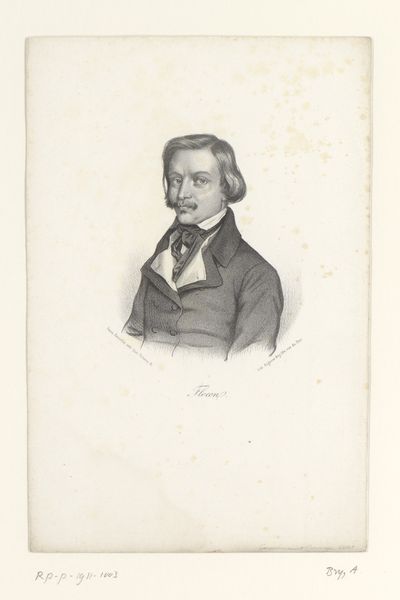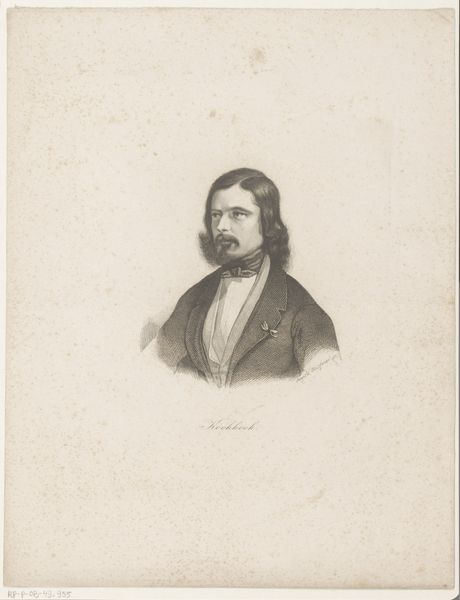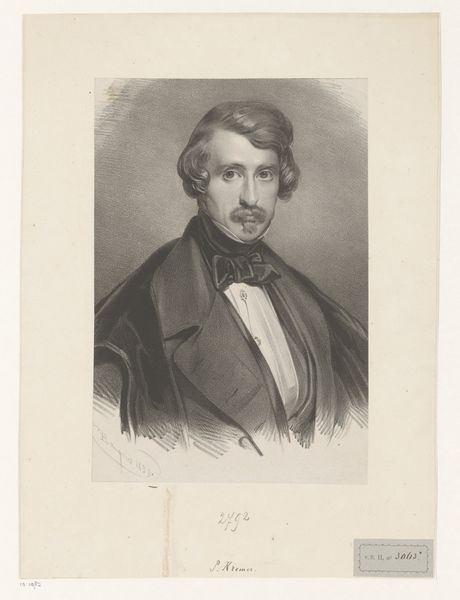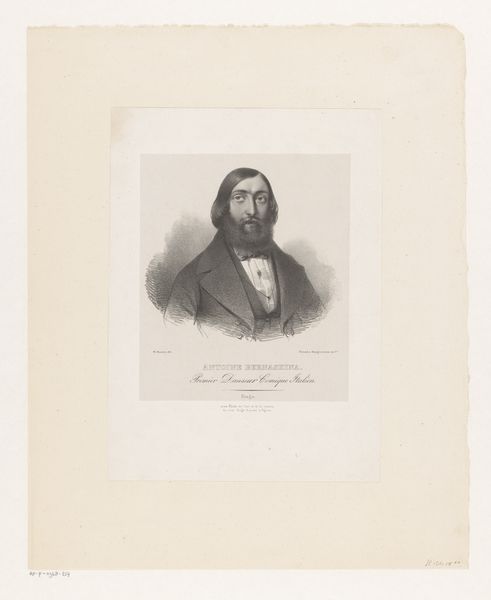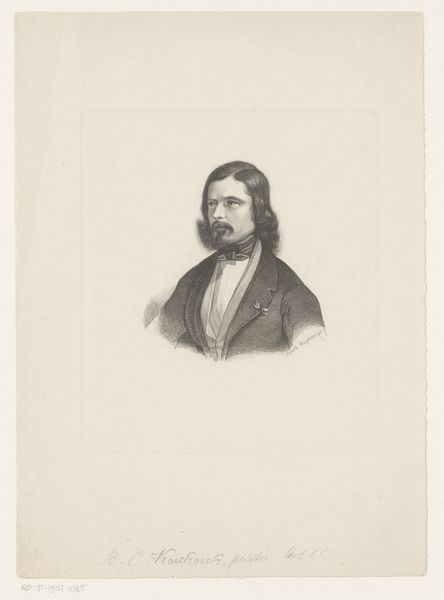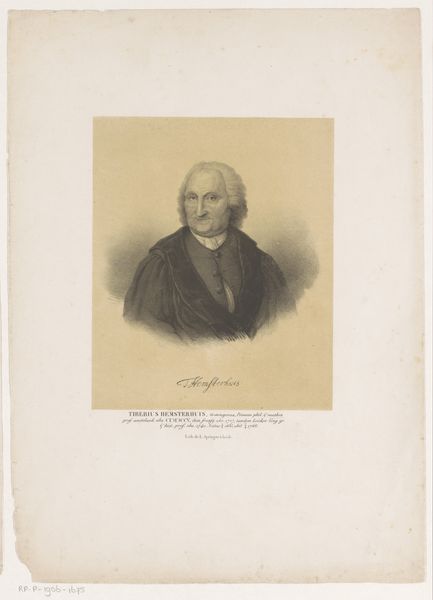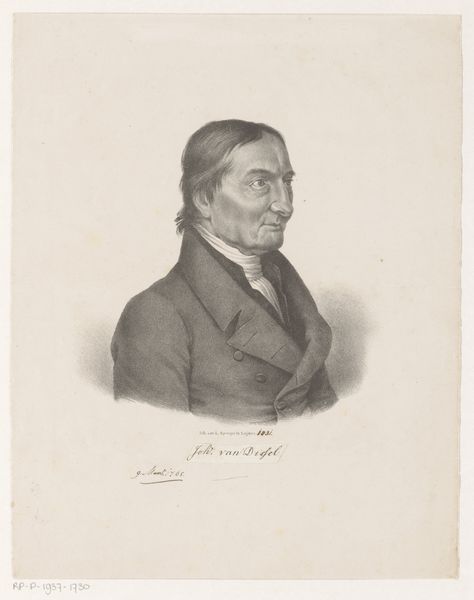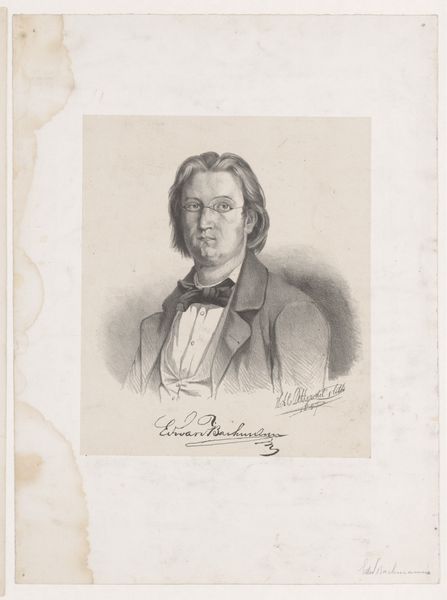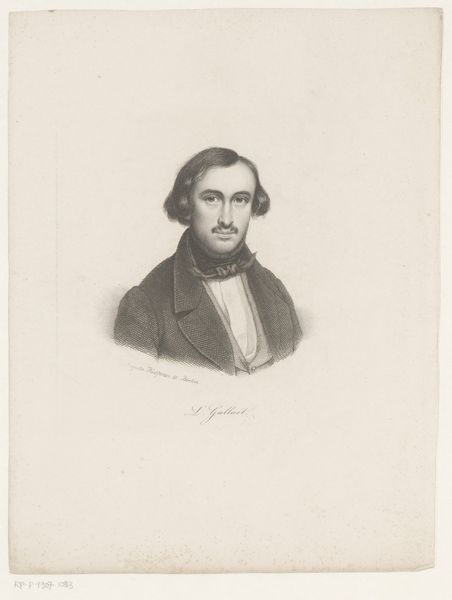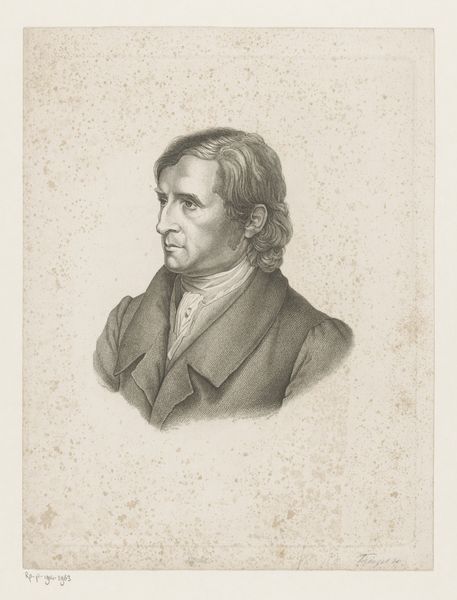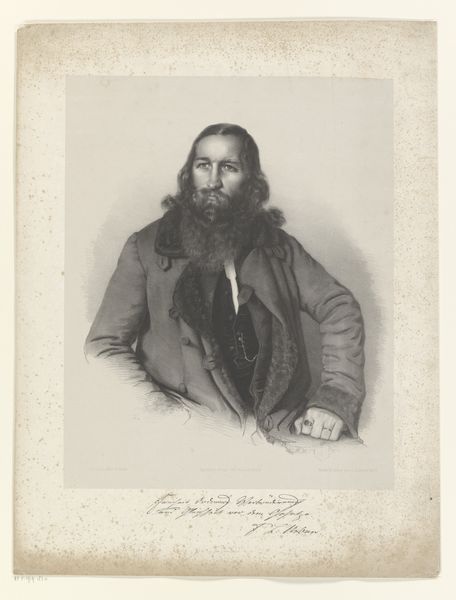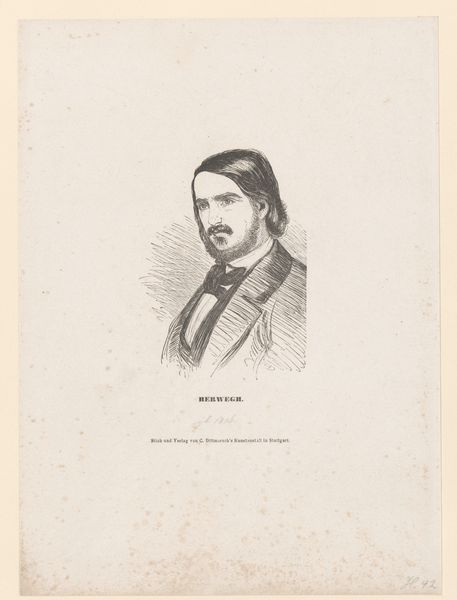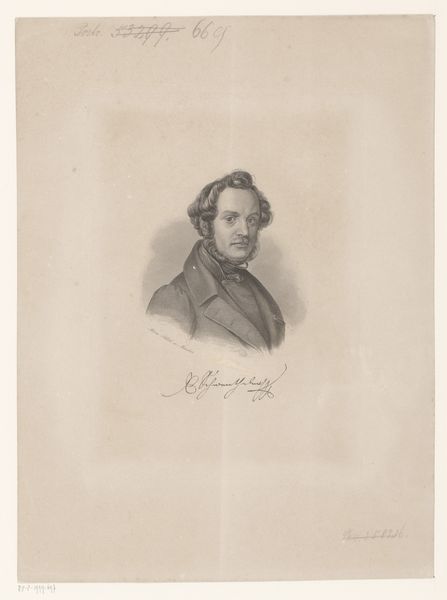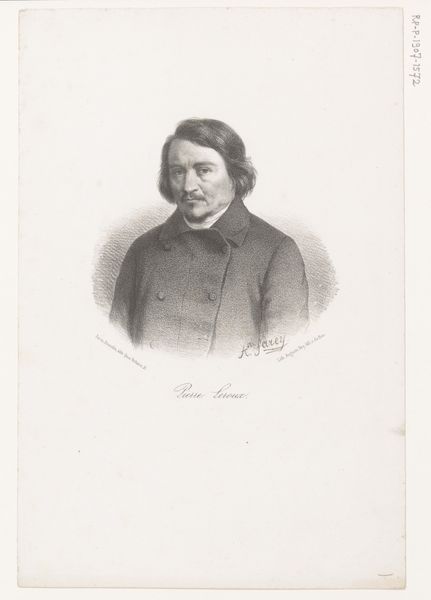
print, paper, engraving
#
portrait
#
neoclacissism
# print
#
paper
#
history-painting
#
engraving
#
realism
Dimensions: height 255 mm, width 177 mm
Copyright: Rijks Museum: Open Domain
This is a portrait of Jean Bousquier, made by Jean Pierre Sudre, sometime in the early 19th century. It's a lithograph, a relatively new printmaking technique at the time. Lithography democratized image production, moving away from older, more laborious methods. Looking at this French portrait, it's easy to see how the medium’s relative ease lent itself to a boom in portraiture. Before photography, printed portraits circulated likenesses, reinforcing social hierarchies and celebrating individual achievement, not always accurately, but in a way that served the sitter. Here, Bousquier is presented with an air of respectability; his dress and the careful rendering of his features speak to a desire for a dignified public image. To understand this image fully, we need to consider the social and institutional contexts that shaped its creation. Research into Bousquier’s life and Sudre's career, alongside studies of the print market in 19th-century France, could reveal the complex interplay of art, commerce, and social identity at play here.
Comments
No comments
Be the first to comment and join the conversation on the ultimate creative platform.
